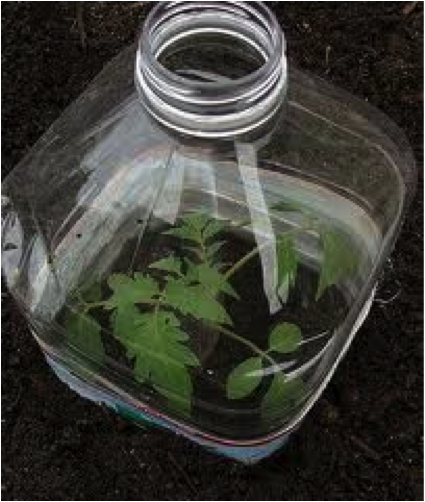Winter has arrived early this year with two-thirds of the lower 48 states experiencing freezing temperatures for several days or more already this month. Prolonged exposure to freezing temperatures, even by so-called hardy plants, can result in damage.
Below are a few of my favorite “anti-freeze” measures that you can employ to defend your landscape and garden plants from the effects of Jack Frost.
- Thoroughly water soil around established plantings, raised beds, and containers (except for succulents). Water has a high heat capacity that will trap daytime warmth and release it slowly overnight during danger periods for frost.
- Cover transplants and newly sprouted plant materials with clear or milky white one gallon or two liter plastic containers used as cloches. Remove the bottoms of the containers and place one over each plant, taking care to press each container about one inch into the moist soil. Remove the bottle caps during daylight hours to vent excess heat and moisture and replace the caps each afternoon to protect tender plants from cold nighttime temperatures.
Clear plastic 2 liter and gallon-sized bottles make great cloches for protecting tender plant materials.
- Surround low-level plantings completely with a loose mound of mulch made from leaf mold, evergreen trimmings (Christmas tree), pine needles, straw, or shredded newspaper. If wind is an issue cover the mound with burlap and stake it in place. Uncover the upper portion of the mound when the danger of frost has passed, but keep it handy to recover should another freezing event occur. Reuse the mulch in spring to prevent weed growth, or add to your compost pile.
Christmas tree cuttings used to protect plant materials from frost damage.
- Surround knee-high plantings and taller plantings as well as dwarf trees with rolls of recycled cardboard, or cardboard appliance boxes. Washer, dryer, refrigerator, and water heater boxes make great frost covers that are easy to install and remove. In windy areas, anchor the boxes with twine and stakes. The cardboard can be reused in the spring for sheet mulching.
- Use bamboo poles to create teepee plant enclosures covered with burlap, old blankets, towels, sheets, drop clothes, plastic sheeting, or carpet padding. Take care to keep the cover material from making contact with covered plants. Be sure to open the teepee each day after the threat of frost has passed.
- Move small and mobile containers together along an exterior wall with a sheltering overhang. For extremely sensitive plants, relocate to a shed or garage.
Following these preventive measures just may keep your plantings from the ravages of winter’s cold.




